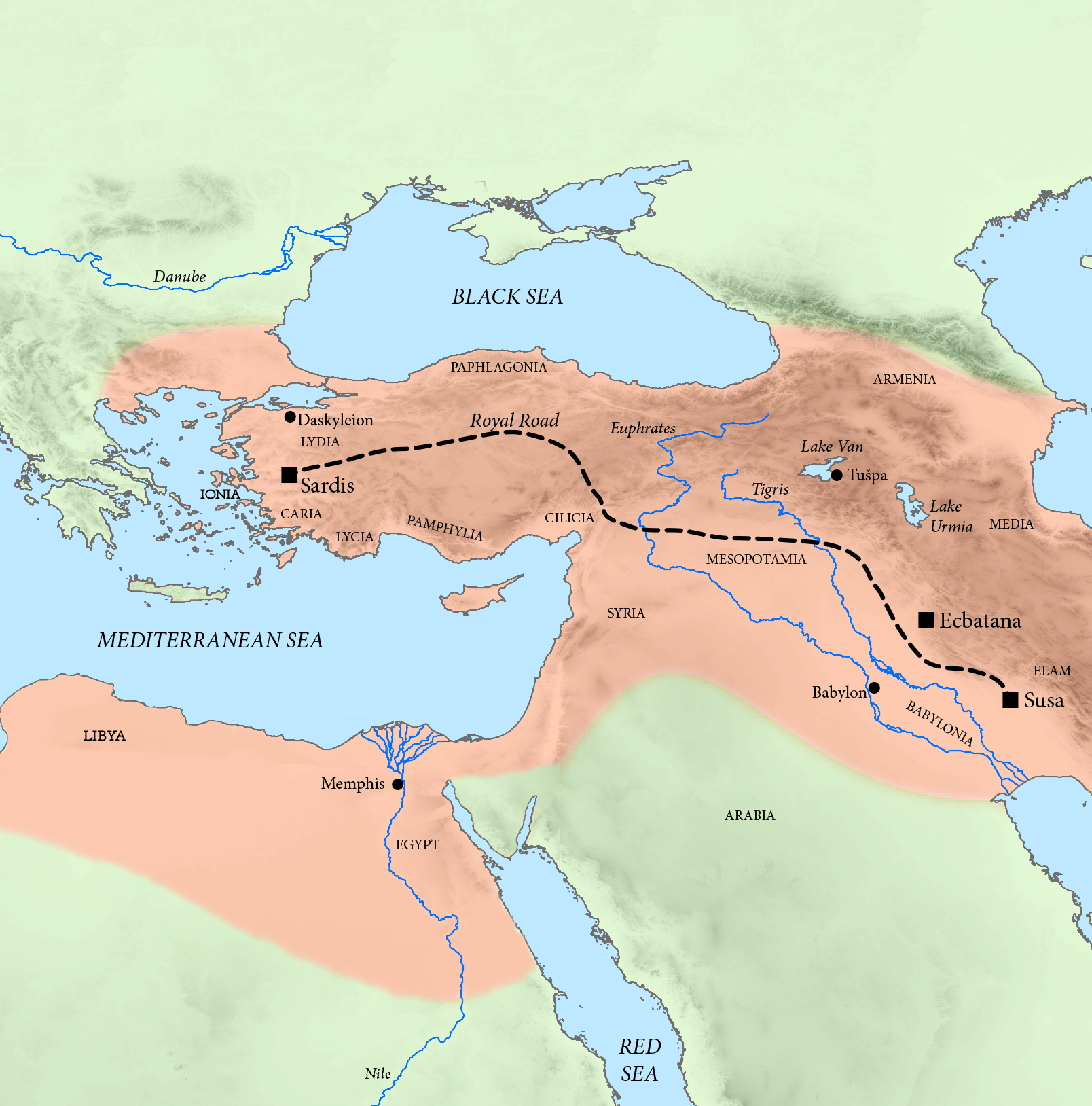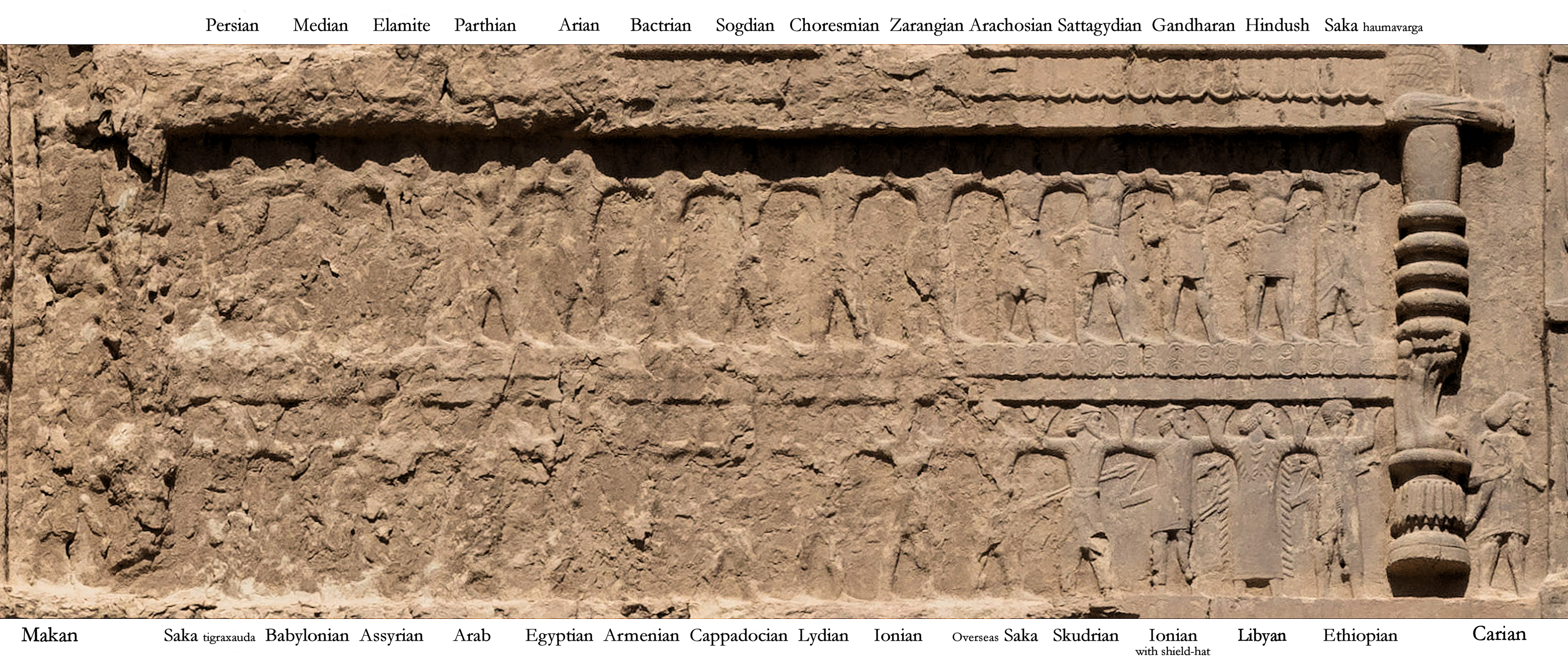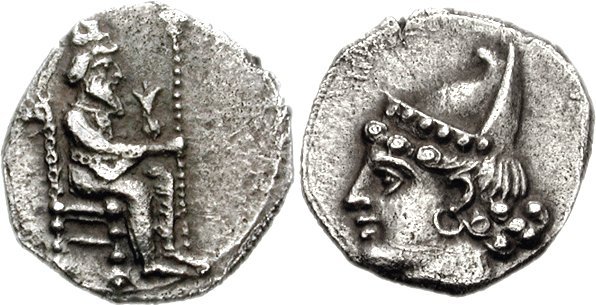|
History Of Achaemenid Egypt
The history of Persian Egypt is divided into two eras following the Achaemenid conquest of Egypt punctuated by an interval of independence: ** Twenty-seventh Dynasty of Egypt (525–404 BC), also known as the First Egyptian Satrapy. ** Thirty-first Dynasty of Egypt (343–332 BC), also known as the Second Egyptian Satrapy. Background In the 5th century BCE, Persian rulers, particularly Cyrus the Great, sought to expand their imperialist agenda to include Egypt. Expansionism was a key strategy for empires of the ancient world to establish military and economic dominance, and Egypt was a priority of Cyrus the Great's, in large part due to the desirability of the Nile river and valley as economic assets. The contemporaneous Egyptian pharaoh, Amasis, attempted to ward off the occupation by forming alliances with neighbouring rulers, in particular Polycrates of Samos, as those rulers also had a vested interest in preventing more significant Persian expansion in their region. This w ... [...More Info...] [...Related Items...] OR: [Wikipedia] [Google] [Baidu] |
Achaemenid Conquest Of Egypt
The Achaemenid conquest of Egypt took place in 525 BCE, leading to the foundation of the Twenty-seventh Dynasty of Egypt, also known as the "First Egyptian Satrapy" (). Egypt thus became a province ( satrapy) of the Achaemenid Persian Empire until 404 BCE while still maintaining Egyptian royalty customs and positions. The conquest was led by Cambyses II, the King of Persia, who defeated the Egyptians at the Battle of Pelusium (525 BCE), and crowned himself as Pharaoh of Egypt. Achaemenid rule was disestablished upon the rebellion and crowning of Amyrtaeus as Pharaoh. A second period of Achaemenid rule in Egypt occurred under the Thirty-first Dynasty of Egypt (343–332 BCE). Origin of the conflict according to Herodotus Herodotus describes how Pharaoh Amasis II would eventually cause a confrontation with Persia. According to Herodotus, Amasis was asked by Cyrus the Great or Cambyses II for an Egyptian ophthalmologist on good terms. Amasis seems to have complied by forcing an ... [...More Info...] [...Related Items...] OR: [Wikipedia] [Google] [Baidu] |
Darius II
Darius II ( peo, 𐎭𐎠𐎼𐎹𐎺𐎢𐏁 ; grc-gre, Δαρεῖος ), also known by his given name Ochus ( ), was King of Kings of the Achaemenid Empire from 423 BC to 405 or 404 BC. Artaxerxes I, who died in 424 BC, was followed by his son Xerxes II. After a month and half Xerxes II was murdered by his brother Sogdianus. His illegitimate brother, Ochus, satrap of Hyrcania, rebelled against Sogdianus, and after a short fight killed him, and suppressed by treachery the attempt of his own brother Arsites to imitate his example. Ochus adopted the name Darius (Greek sources often call him Darius ''Nothos'', "Bastard"). Neither the names Xerxes II nor Sogdianus occur in the dates of the numerous Babylonian tablets from Nippur; here effectively the reign of Darius II follows immediately after that of Artaxerxes I. Historians know little about Darius II's reign. A rebellion by the Medes in 409 BC is mentioned by Xenophon. It does seem that Darius II was quite dependent o ... [...More Info...] [...Related Items...] OR: [Wikipedia] [Google] [Baidu] |
Sasanian Empire
The Sasanian () or Sassanid Empire, officially known as the Empire of Iranians (, ) and also referred to by historians as the Neo-Persian Empire, was the History of Iran, last Iranian empire before the early Muslim conquests of the 7th-8th centuries AD. Named after the Sasanian dynasty, House of Sasan, it endured for over four centuries, from 224 to 651 AD, making it the longest-lived List of monarchs of Persia, Persian imperial dynasty. The Sasanian Empire succeeded the Parthian Empire, and re-established the Persians as a major power in late antiquity alongside its neighbouring arch-rival, the Roman Empire (after 395 the Byzantine Empire).Norman A. Stillman ''The Jews of Arab Lands'' pp 22 Jewish Publication Society, 1979 International Congress of Byzantine Studies ''Proceedings of the 21st International Congress of Byzantine Studies, London, 21–26 August 2006, Volumes 1–3'' pp 29. Ashgate Pub Co, 2006 The empire was founded by Ardashir I, an Iranian ruler who rose to po ... [...More Info...] [...Related Items...] OR: [Wikipedia] [Google] [Baidu] |
Achaemenid Egypt
The history of Persian Egypt is divided into two eras following the Achaemenid conquest of Egypt punctuated by an interval of independence: ** Twenty-seventh Dynasty of Egypt (525–404 BC), also known as the First Egyptian Satrapy. ** Thirty-first Dynasty of Egypt (343–332 BC), also known as the Second Egyptian Satrapy. Background In the 5th century BCE, Persian rulers, particularly Cyrus the Great, sought to expand their imperialist agenda to include Egypt. Expansionism was a key strategy for empires of the ancient world to establish military and economic dominance, and Egypt was a priority of Cyrus the Great's, in large part due to the desirability of the Nile river and valley as economic assets. The contemporaneous Egyptian pharaoh, Amasis, attempted to ward off the occupation by forming alliances with neighbouring rulers, in particular Polycrates of Samos, as those rulers also had a vested interest in preventing more significant Persian expansion in their region. This ... [...More Info...] [...Related Items...] OR: [Wikipedia] [Google] [Baidu] |
History Of Egypt By Period
History (derived ) is the systematic study and the documentation of the human activity. The time period of event before the invention of writing systems is considered prehistory. "History" is an umbrella term comprising past events as well as the memory, discovery, collection, organization, presentation, and interpretation of these events. Historians seek knowledge of the past using historical sources such as written documents, oral accounts, art and material artifacts, and ecological markers. History is not complete and still has debatable mysteries. History is also an academic discipline which uses narrative to describe, examine, question, and analyze past events, and investigate their patterns of cause and effect. Historians often debate which narrative best explains an event, as well as the significance of different causes and effects. Historians also debate the nature of history as an end in itself, as well as its usefulness to give perspective on the problems of the ... [...More Info...] [...Related Items...] OR: [Wikipedia] [Google] [Baidu] |
Dynasties Of Ancient Egypt
In ancient Egyptian history, dynasties are series of rulers sharing a common origin. They are usually, but not always, traditionally divided into 32 pharaonic dynasties; these dynasties are commonly grouped by modern scholars into "kingdoms" and "intermediate periods". The first 30 divisions come from the 3rd century BC Egyptian priest Manetho, whose ''Aegyptaiaca'', was probably written for a Greek-speaking Ptolemaic ruler of Egypt but survives only in fragments and summaries. The names of the last two, the short-lived 31st Dynasty and the longer-lasting Ptolemaic Dynasty, are later coinings. While widely used and useful, the system does have its shortcomings. Some dynasties only ruled part of Egypt and existed concurrently with other dynasties based in other cities. The 7th might not have existed at all, the 10th seems to be a continuation of the 9th, and there might have been one or several Upper Egyptian Dynasties before what is termed the 1st Dynasty. List of dynas ... [...More Info...] [...Related Items...] OR: [Wikipedia] [Google] [Baidu] |
Darius III
Darius III ( peo, 𐎭𐎠𐎼𐎹𐎺𐎢𐏁 ; grc-gre, Δαρεῖος ; c. 380 – 330 BC) was the last Achaemenid King of Kings of Persia, reigning from 336 BC to his death in 330 BC. Contrary to his predecessor Artaxerxes IV Arses, Darius was a distant member of the Achaemenid dynasty. During his early career, he was reportedly an obscure figure among his peers and first rose to prominence during the Cadusian expedition of Artaxerxes III in the 350s BC. As a reward for his bravery, he was given the Satrapy of Armenia. Around 340 BC, he was placed in charge of the royal "postal service," a high-ranking position. In 338 BC, Artaxerxes III met an abrupt end after being poisoned by the court eunuch and chiliarch (''hazahrapatish'') Bagoas, who installed his youngest son Arses on the throne. He only reigned for a few years, until Bagoas had him poisoned as well. Darius was subsequently installed on the throne and soon forced Bagoas to drink his poison after discovering t ... [...More Info...] [...Related Items...] OR: [Wikipedia] [Google] [Baidu] |
Arses Of Persia
Arses ( peo, *R̥šā; grc-gre, Ἀρσής), also known by his regnal name Artaxerxes IV (; peo, 𐎠𐎼𐎫𐎧𐏁𐏂𐎠 ; grc-gre, Ἀρταξέρξης), was the twelfth Achaemenid King of Kings from 338 to 336 BC. Arses ascended the throne, after his father Artaxerxes III—who had caused a resurgence of the Persian Empire—was poisoned by the eunuch Bagoas. The latter put Arses on the throne with the expectation of being able to control him. With the weakening of the Achaemenid Empire from the assassination of Artaxerxes III and the succession of Arses, the Greek league sent troops into Asia in 336. Arses, in an attempt to free himself from Bagoas' influences, tried to have the eunuch poisoned; but did not succeed, instead succumbing to poison himself at the orders of Bagoas. Bagoas put Arses' cousin Darius III on the throne after him. Name He is known as in Greek sources and that seems to have been his real name, but the Xanthus trilingue and potsherds fr ... [...More Info...] [...Related Items...] OR: [Wikipedia] [Google] [Baidu] |
Nectanebo II
Nectanebo II ( Egyptian: ; grc-gre, Νεκτανεβώς ) was the last native ruler of Ancient Egypt, as well as the third and last pharaoh from the Thirtieth Dynasty of Egypt. He reigned from 358 to 340 BC. Under Nectanebo II, Egypt prospered. During his reign, the Egyptian artists developed a specific style that left a distinctive mark on the reliefs of the Ptolemaic Kingdom. Like his indirect predecessor Nectanebo I, Nectanebo II showed enthusiasm for many of the cults of the gods within ancient Egyptian religion, and more than a hundred Egyptian sites bear evidence of his attentions. Nectanebo II, however, undertook more constructions and restorations than Nectanebo I, commencing in particular the enormous Egyptian temple of Isis (the Iseum). For several years, Nectanebo II was successful in keeping Egypt safe from the Achaemenid Empire. However, betrayed by his former servant, Mentor of Rhodes, Nectanebo II was ultimately defeated. The Persians occupied Memphis ... [...More Info...] [...Related Items...] OR: [Wikipedia] [Google] [Baidu] |


.jpg)


